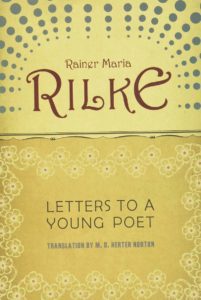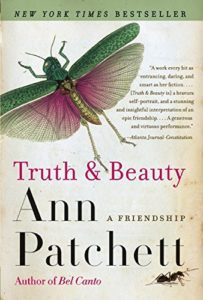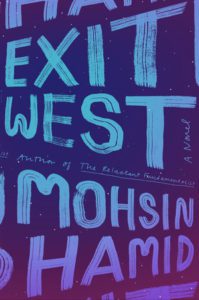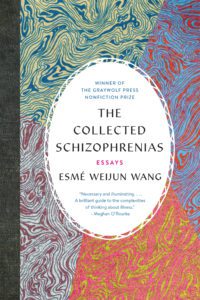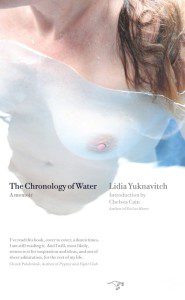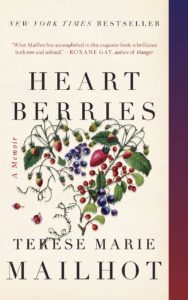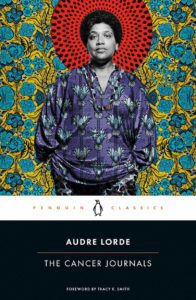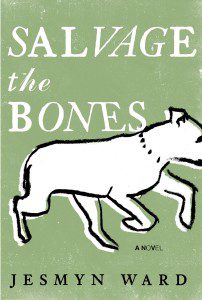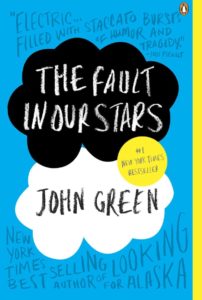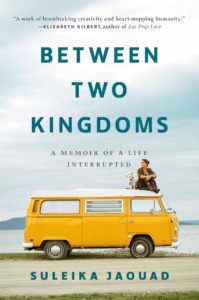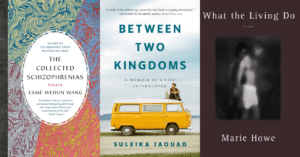
I’ve spent my life navigating the in-between. As the child of a Swiss mother and Tunisian father who went to six different schools on three different continents by the age of twelve, I grew up betwixt-and-between worlds, languages, cultures, and customs. Then, after spending the better half of my twenties in treatment for leukemia, I entered a different liminal space: “cured,” but far from well.
The terrain where we find ourselves now—uncharted, uncertain—feels familiar because of these experiences. Below is a list of books that have helped me cross the distance between the no-longer and not-yet. Each has guided me toward making peace with the reality that, sometimes, we have to make a home in the wilderness—with books as our refuge.
***
Letters to a Young Poet by Rainer Maria Rilke
I was given this book by my parents as a teenager, and I’ve revisited it at different points in my life. Written by the great German poet and novelist Rainer Maria Rilke to a young cadet and would-be poet, the book is a collection of ten letters that consider everything from how a poet should live and love to the effect of criticism on a work of art. To me, this book is not just important for poets—not just for artists, even—but also for anyone needing encouragement and insight at a pivotal or transitional moment. Each time I reread it something different strikes me, but one thing that always resonates is this timeless line: “No one can advise or help you—no one. There is only one thing you should do. Go into yourself.” It reminds me that, no matter the in-between place in which I find myself, I already have the answers I need.
Truth & Beauty: A Friendship by Ann Patchett
Ann Patchett’s Truth & Beauty was another gift; someone gave it to me when I was preparing for a bone marrow transplant in my early twenties. For the first one hundred pages, I thought it was a novel—which I blame equally on a motherlode of morphine and Patchett’s skillful conjuring and vivid prose. But this heartbreaking, riveting story is a true one: it’s the story of Patchett’s decades-long friendship with the poet Lucy Grealy, who suffered from cancer in her jaw bone as a young girl and carried both the physical and psychological scars of it. (When I realized this, I immediately did a deep dive into Grealy’s work, from her poems to the story of her life, which she renders in An Autobiography of a Face—another book I’d recommend.) There were so many things that I loved about Truth & Beauty, like the insight it gives into the trauma of illness on the mind and body long after the disease is gone and the way it echoed my own desire to save loved ones from pain, be it cancer or addiction. Most of all, I loved its frank consideration of friendship—both the brutal burdens and the joyful rewards.
Exit West by Mohsin Hamid
I read Exit West on a flight from New York to Los Angeles. (Remember when we used to hop on an airplane and fly two thousand miles away?) I cracked the spine when I got to my seat and didn’t stop reading until we touched down, six hours later. This magical realist tale follows two young lovers whose lives are restricted by a repressive authoritarian regime. As conditions worsen—as the number of checkpoints grow, as rumors of war begin to rumble—they hear whispers of doors that can whisk people to a different, more liberated landscape. Soon, they must decide: should they stay and bear the ills they know, or find a door and step through it? Having grown up as the child of immigrants from two very different cultures in a small, mostly white town in upstate New York, the idea of these portals felt strangely familiar: I could step from the kitchen, where my mother was making her famous Swiss apple tart, into the living room, where my father would be spinning a tale of his childhood in Tunisia, then out the front door into a Norman Rockwell painting. With his propulsive prose and gripping storyline, Hamid reminds us of the power of in-betweenness—of place and of identity.
The Collected Schizophrenias: Essays by Esmé Weijun Wang
One of the most difficult things about being sick was making peace with the constraints it placed on my ability contribute to and participate in the world. In her essay collection, Wang grapples with the idea of living with limitations—what it’s like to struggle with chronic physical and mental illnesses from which there really is no recovery. A devastating picture of how a carefully ordered world can break down, the book chronicles Wang’s struggle that begins with a bipolar II diagnosis in her teens. Several years later, she has her first auditory hallucination and is diagnosed with schizoaffective disorder; two years after that comes a diagnosis of late-stage Lyme disease. The Collected Schizophrenias is a dazzling hybrid of memoir, research, and reportage that manages to contain rigorous argumentation but also flights of whimsy. Wang debunks misunderstandings and myths, especially about schizophrenia, and she looks critically at the language we use around illness, teasing out the ableist and dehumanizing implications of calling someone “a schizophrenic” (as opposed to “a person who has schizophrenia”), or our culture’s pervasive and thoughtlessly casual use of words like “crazy.” But what resonated with me most was seeing Wang wrestle with the complexity of having both great ambitions and real limitations, and how she marries the two.
The Chronology of Water by Lidia Yuknavitch
I’ve gifted The Chronology of Water by Lidia Yuknavitch to so many friends I’ve lost count. It’s my all-time favorite memoir—a story of misfithood unlike any other I’ve read, and one that I return to again and again. Yuknavitch’s voice is singular, and her experimentation with chronology and form blasted open for me the constraints of what a memoir could be and look like. A swimmer turned artist, Yuknavitch’s central metaphor is water, and her writing is fluid, constantly changing shape. No subject is too taboo; she writes about it all—the blurriness of sexuality and grief and motherhood, of addiction and self-destruction and survival—in exquisite prose and with an unvarnished honesty that leaves us reeling, breathless. A trailblazing writer, Yuknavitch is unafraid to take creative risks, both in life and on the page, and she emboldens us to do the same.
Heart Berries by Terese Marie Mailhot
When Terese Marie Mailhot finds herself hospitalized for a dual diagnosis of bipolar II and post-traumatic stress disorder, she is given a notebook and starts to write her way out of a traumatic upbringing. That notebook is the source material for her memoir, Heart Berries, a blisteringly beautiful and unflinchingly honest account of coming of age on the Seabird Island Indian Reservation in the Pacific Northwest. As someone who has often turned to a notebook in my most difficult passages, I loved the raw and unfiltered quality of her reflections, devoid of any sense of artifice or contrived transformation or neat resolution. Her remembering becomes a process of re-membering, of piecing together what was fractured and of taking the reins of her own story arc. Her rage is alive on the page, her memory imperfect and infused with imaginative leaps. There’s an immediacy, too, to this writing, and the result is an immersive, thrilling explosion of poetry. Mailhot’s voice is rare in its authenticity—especially in a culture where that word has become hollow to the point of meaninglessness.
The Cancer Journals by Audré Lorde
The Cancer Journals is an edifying, electrifying collection of journal entries by Audré Lorde in which she chronicles her struggle with breast cancer and a radical mastectomy. In this fiercely feminist text, Lorde unveils the misconceptions that so often enshroud illness, exploring the intersection of sexuality, womanhood, and the body. I devoured this book while attempting to write my own cancer journal. Illness was so omnipresent in my life that it became my subject almost without choice, but Lorde showed me a new way to engage with the experience. Sidestepping the usual clichés and the pull toward silver linings, she examines illness through both a personal and political lens, and with an intellectual rigor that is empowering and revelatory. While grappling with the permanent imprints of cancer on my own body, including infertility and early menopause, it was tempting to feel somehow diminished as a woman. But Lorde pushes against the narrow definition of how women, and their bodies, should look and behave. She gave me permission to reimagine everything: “Women have been programmed to view our bodies only in terms of how they look and feel to others, rather than how they feel to ourselves, and how we wish to use them.”
Salvage the Bones by Jesmyn Ward
Just thinking back on Ward’s masterful second novel is a transportive experience—suddenly, I’m in Bois Sauvage with Esch, teenaged and pregnant, in her family’s ramshackle home, waiting for the hurricane to hit. It’s such a powerful rendering of the human experience of realizing that we’re small and vulnerable and that so much is beyond our control. And yet, even amid hardship, the lives of Ward’s characters are not without beauty. The humanity, loyalty, and hope against hope that Ward imparts to her characters is stunning—like Esch’s brother, Skeetah, who can’t help but believe he’ll find his beloved pit bull China and her puppies after the hurricane sweeps them away. The book is rich in scene, depicted in language that is both vivid and precise, restrained when it needs to be, then soaring into lyric glory. It shows the full complexity of the in-between: full of poignancy, already tinged with loss, but not devoid of hope.
The Fault in Our Stars by John Green
In The Fault in Our Stars, John Green tells the story of two teenagers facing terminal cancer diagnoses, and in doing this, he broke so many silences cloaking the experience of illness experienced in youth. It’s a heartbreaking but also laugh-out-loud story of first love and coming of age during chemo. Back in 2012, when the novel was published, there were very few books that focused on the young adult cancer experience. (Of note: Green writes so deftly and accurately about the experience, I was surprised to learn he had not himself been sick.) One of the hardest aspects of being young and sick was feeling isolated and alienated from my peers. I quickly learned that when people don’t know what to say, they often say nothing at all; many stay away for this reason. To witness The Fault in our Stars explode into the mainstream, to know that the fullness of experiences like my own has been made known to so many, feels like no small gift.
What the Living Do by Marie Howe
What the Living Do by Marie Howe reads less like a book of poems than a propulsive, lyrical novella. Written during the AIDS epidemic and in the aftermath of her beloved brother Johnny’s death, Howe is looking back, but her poems don’t feel memorial—they convey, instead, the immediacy of grief and the ongoingness of loving someone even once they’re no longer with us. She articulates what can feel impossible to find words for while in the fog of mourning. She bears witness to the death of a loved one in a way that’s heartfelt without being sentimental, laid bare without feeling like a play for pity. Howe’s writing makes me want to be vulnerable in the truest sense of vulnerability—arms-wide to the beautiful and to the incredibly difficult. Tender and openhearted, without armor.
And to close out this wonderful list, we just had to include Suleika’s debut memoir, Between Two Kingdoms, out now from Random House! – Ed.
Between Two Kingdoms: A Memoir of a Life Interrupted by Suleika Jaouad
A few weeks shy of her twenty-third birthday, Suleika Jaouad received a diagnosis: leukemia, with a 35% chance of survival. Just like that, the life she had imagined for herself went up in flames. She would spend much of the next four years in a hospital bed, fighting for her life and chronicling the saga in a column for The New York Times. When Jaouad finally walked out of the cancer ward—after three and a half years of chemo, a clinical trial, and a bone marrow transplant—she was, according to the doctors, cured. But as she would soon learn, a cure is not where the work of healing ends; it’s where it begins. How would she reenter the world and live again? How could she reclaim what had been lost? Jaouad embarked on a 100-day, 15,000-mile road trip across the country. What she learned on this trip is that the divide between sick and well is porous, that the vast majority of us will travel back and forth between these realms throughout our lives.

